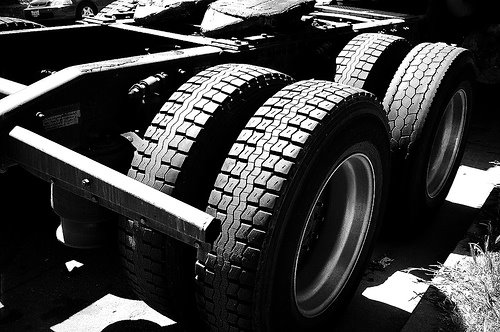In the world of commercial trucking, significant advancements continue to be made in areas affecting truck performance, efficiency, comfort and safety. Aerodynamic design of tractors, smaller but more powerful engines and a shift towards replacing diesel-burning engines with cleaner, fuel-saving natural gas burning engines are all being implemented in an effort to save resources and to lessen environmental impact. One of the latest changes making its way into the industry is the use of low rolling resistance tires designed to improve fuel economy and reduce emissions, although the benefits of this new development remain questionable to some.

Trucking Tips To Improve Fuel Economy Shouldn’t Sacrifice Safety
Tires are a critical component of any motorized vehicle, being the sole connection to the road surface on which it is operating. Tire design has changed considerably through the years, with manufacturers continually attempting to make them provide a more comfortable ride, better handling, improved durability, increased traction and enhanced safety characteristics. These improvements are accomplished through a variety of means, including:
- Overall construction design
- Materials used for compound formulation
- Tread configuration
- Open- versus closed-shoulder design
- Siping
- Tread block size and placement
Newly adopted regulations in the State of California now require nearly all heavy duty tractor/trailers to begin utilizing only specific tires that have been verified to adhere to the U.S. EPA SmartWay Program, which designates what tires qualify. These SmartWay verified tires are designed to have lower rolling resistance, estimated to reduce fuel consumption by a minimum of three percent and to reduce emissions of greenhouse gases.
While SmartWay verified tires are not yet mandated for use in Colorado, both the Colorado Motor Carriers Association, chaired by Victor Domenico, and the Colorado Motor Carrier Safety Administration encourage members to voluntarily embrace the program. When fitting your truck with tires, however, there are other considerations to make besides reduced emissions and fuel consumption. The major downside of tires that have lower rolling resistance is that the compounds used to achieve increased mileage have a negative effect on a tire’s traction capabilities.
If you’re driving your rig day in and day out through the mountainous terrain of Colorado, you want all the traction you can get, especially when the roads become slick. Sacrificing performance and safety for improved economy may not be such a good tradeoff, especially if the tires are more expensive to purchase and have a shorter life expectancy. We’d like to hear your opinion on this.
